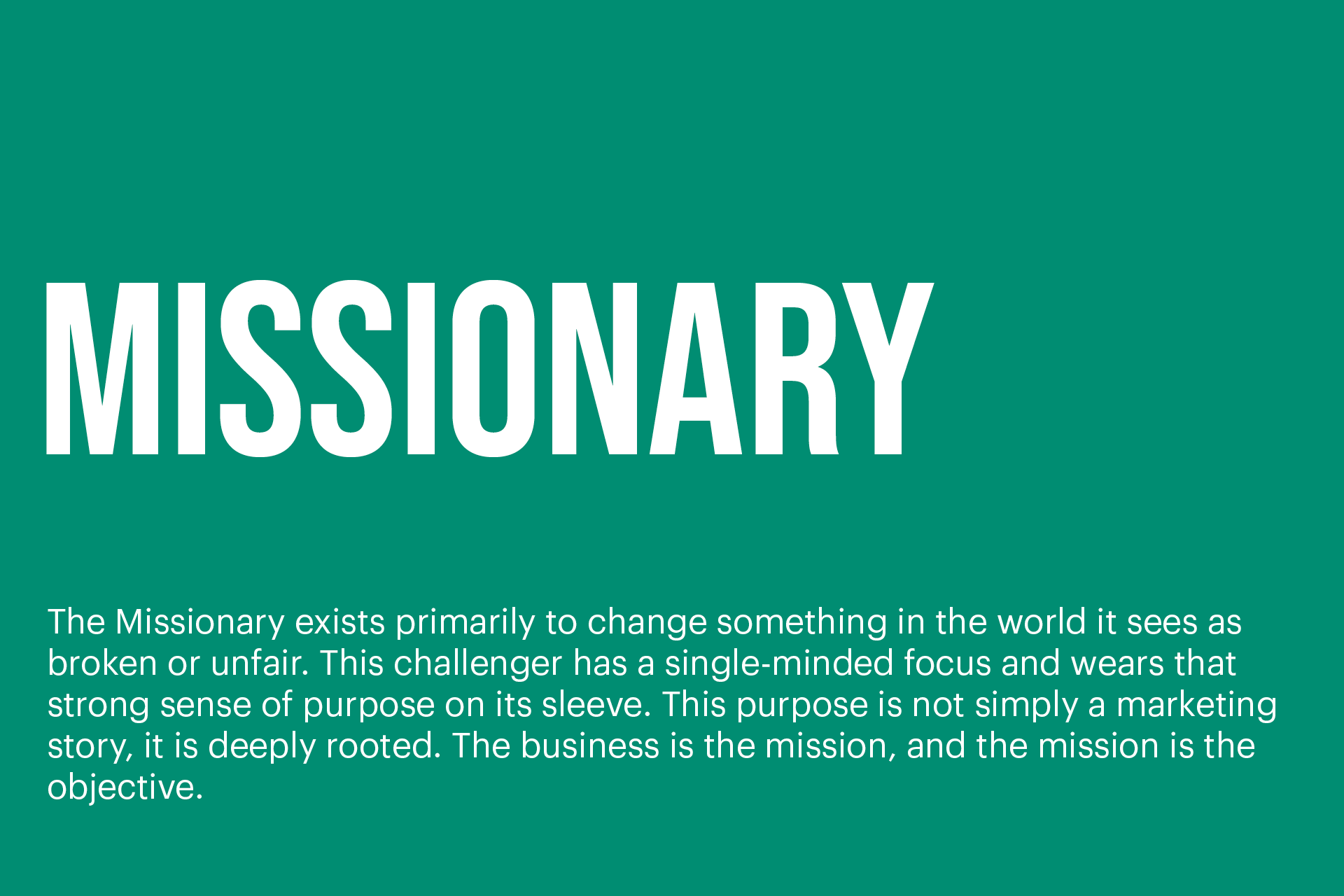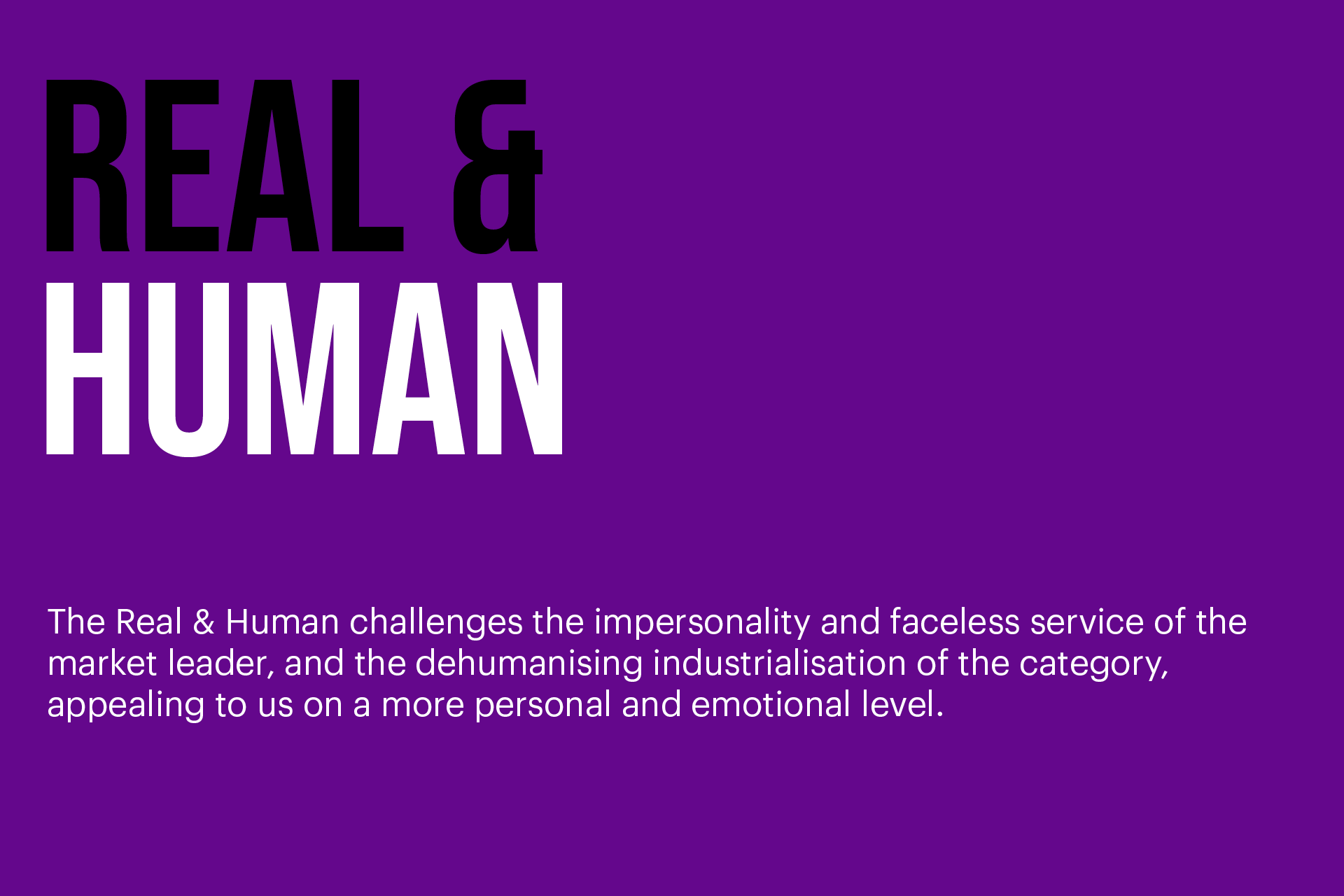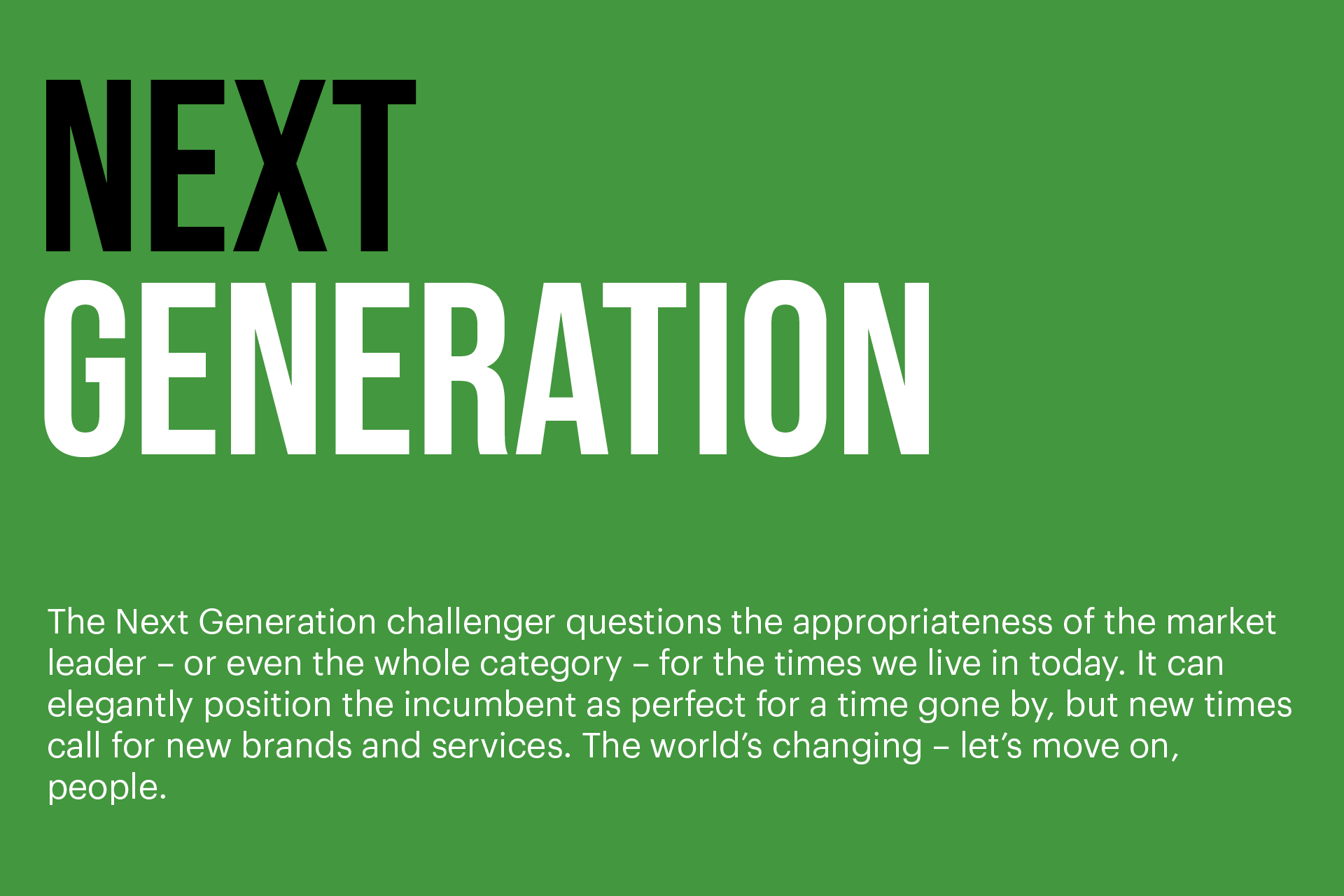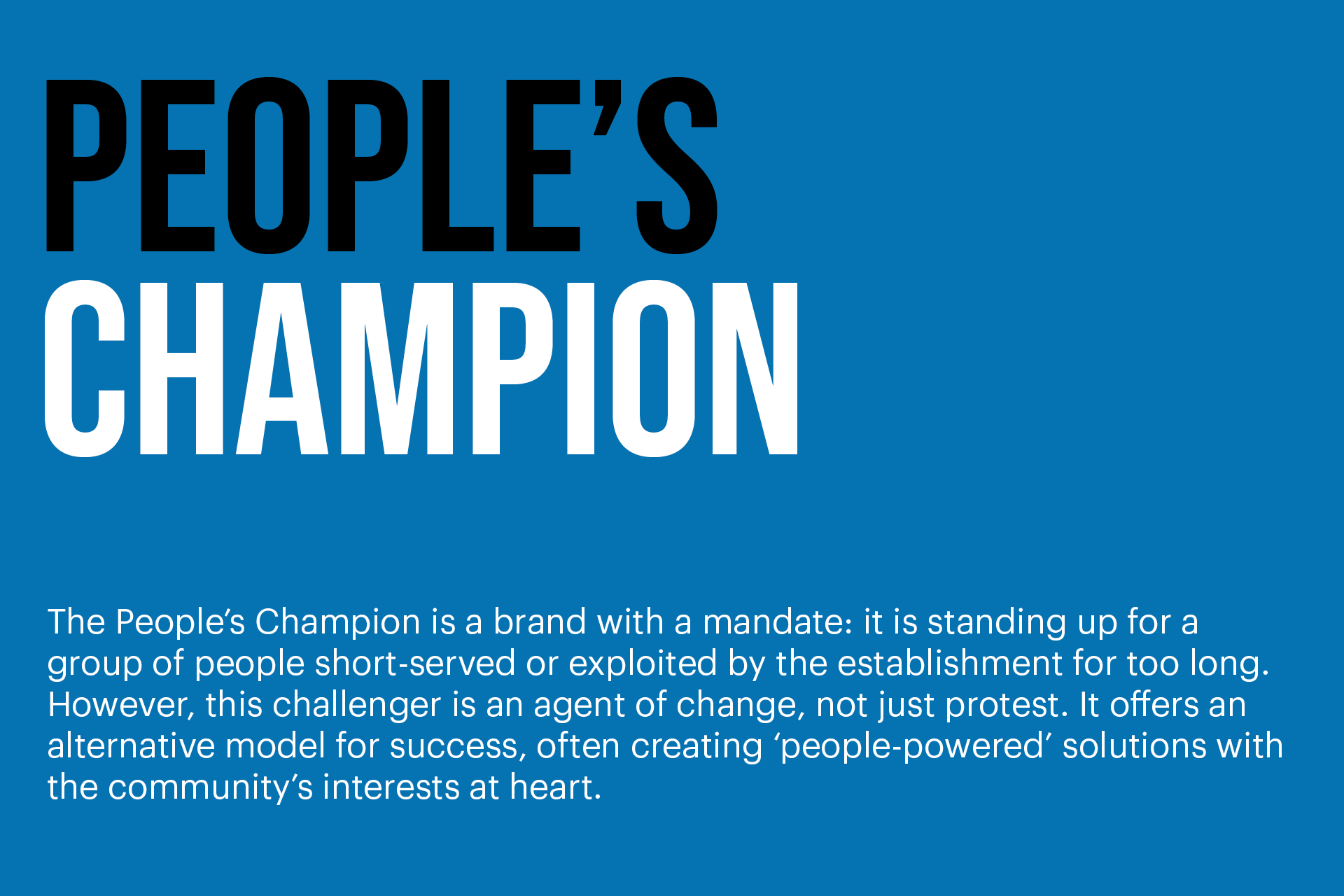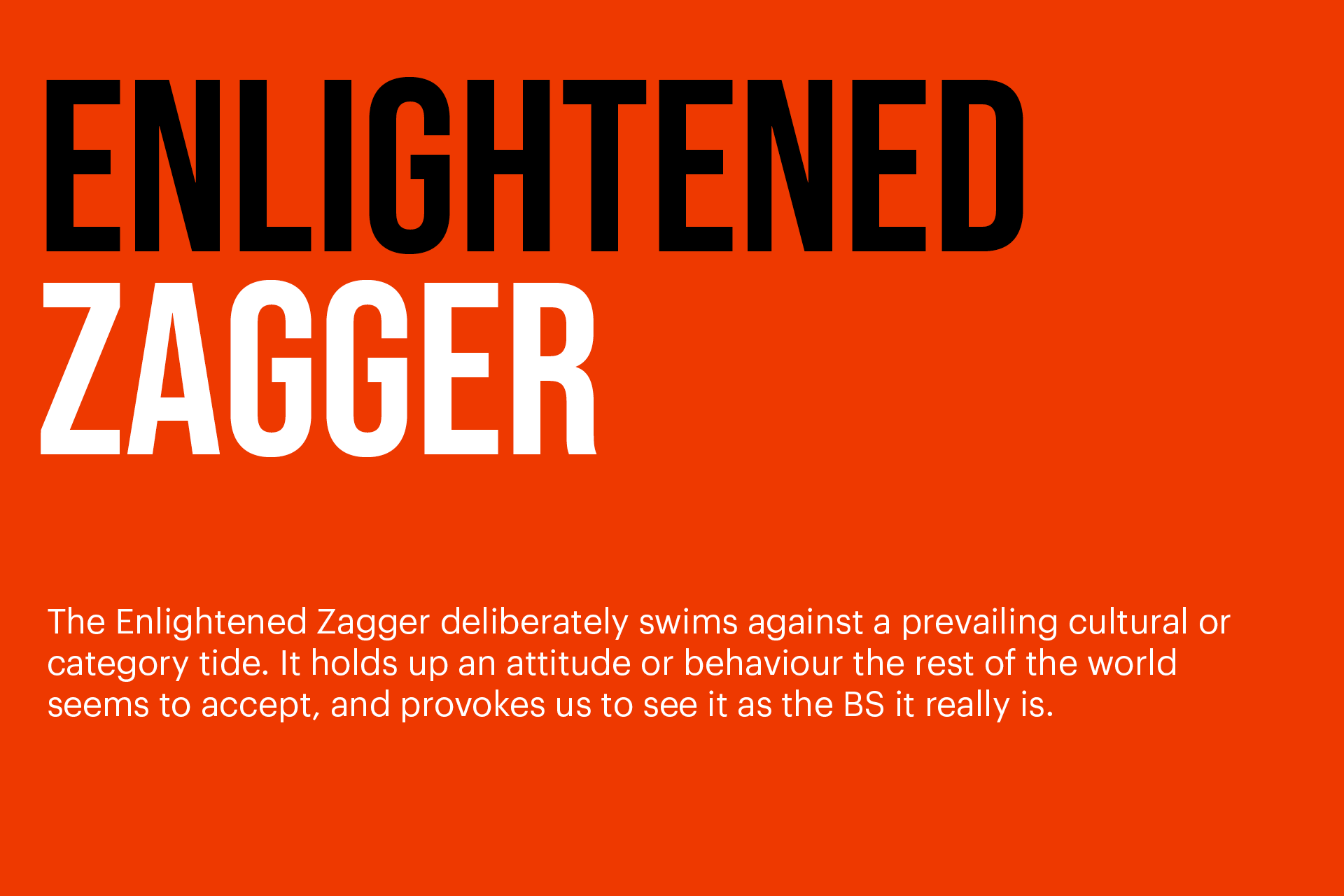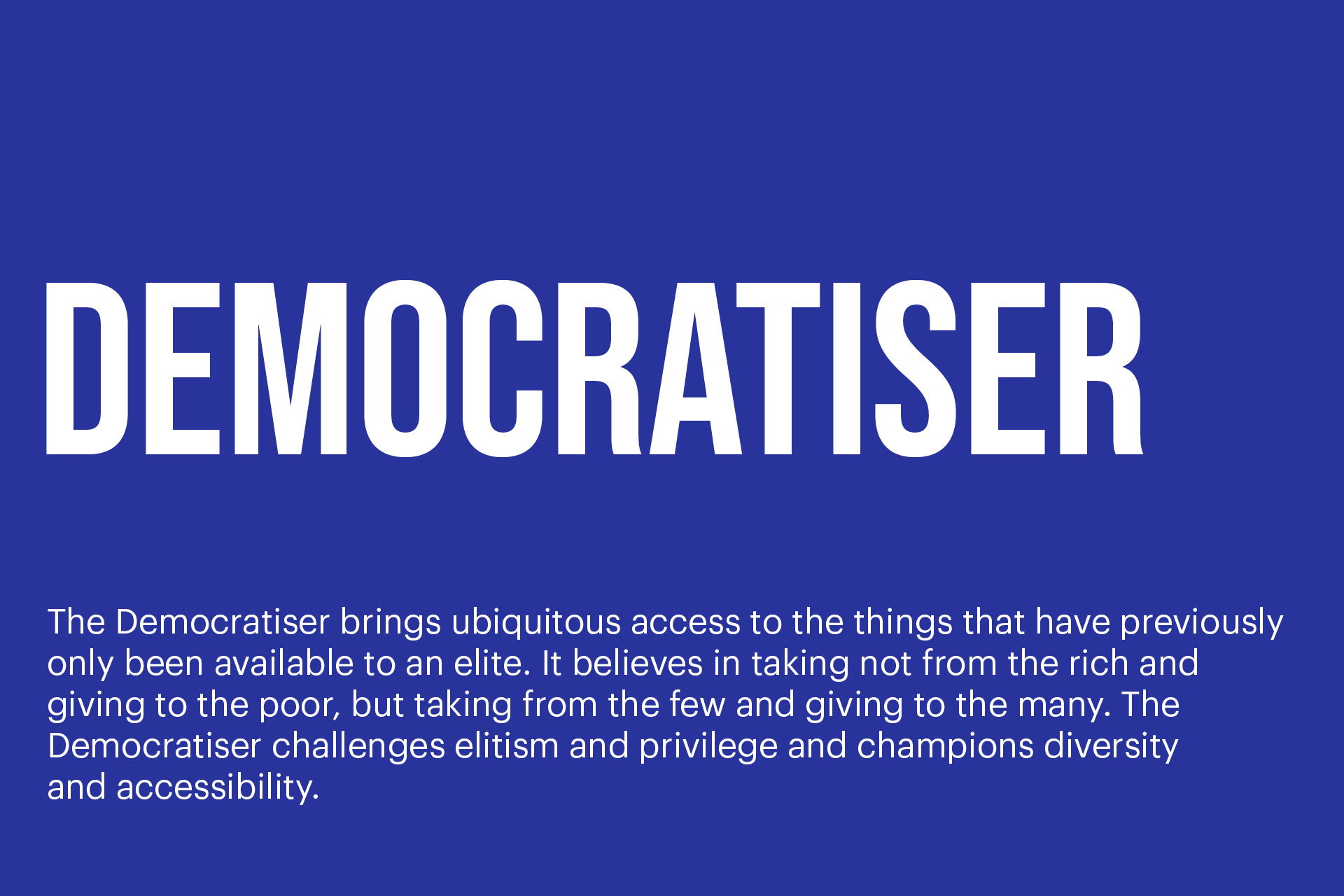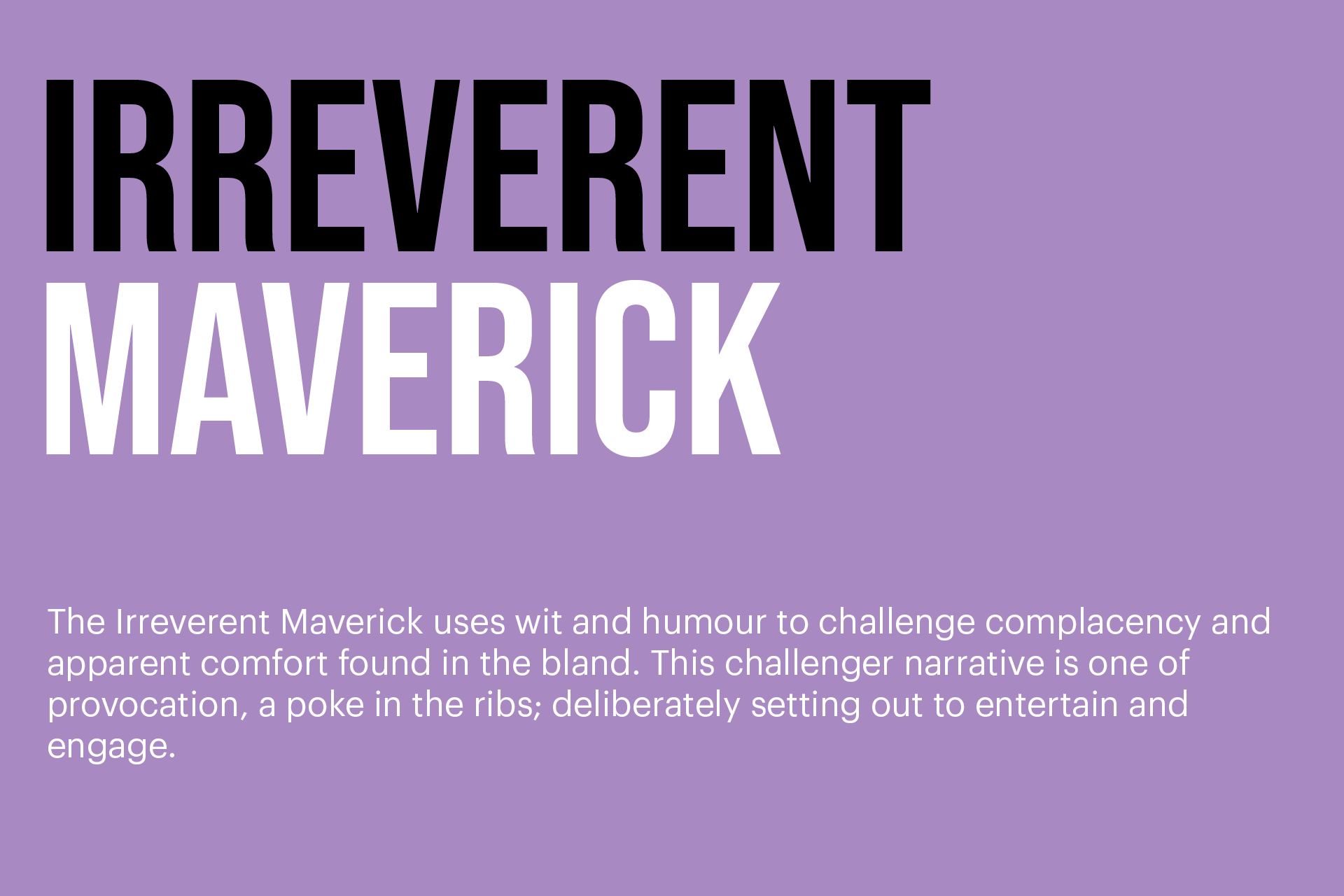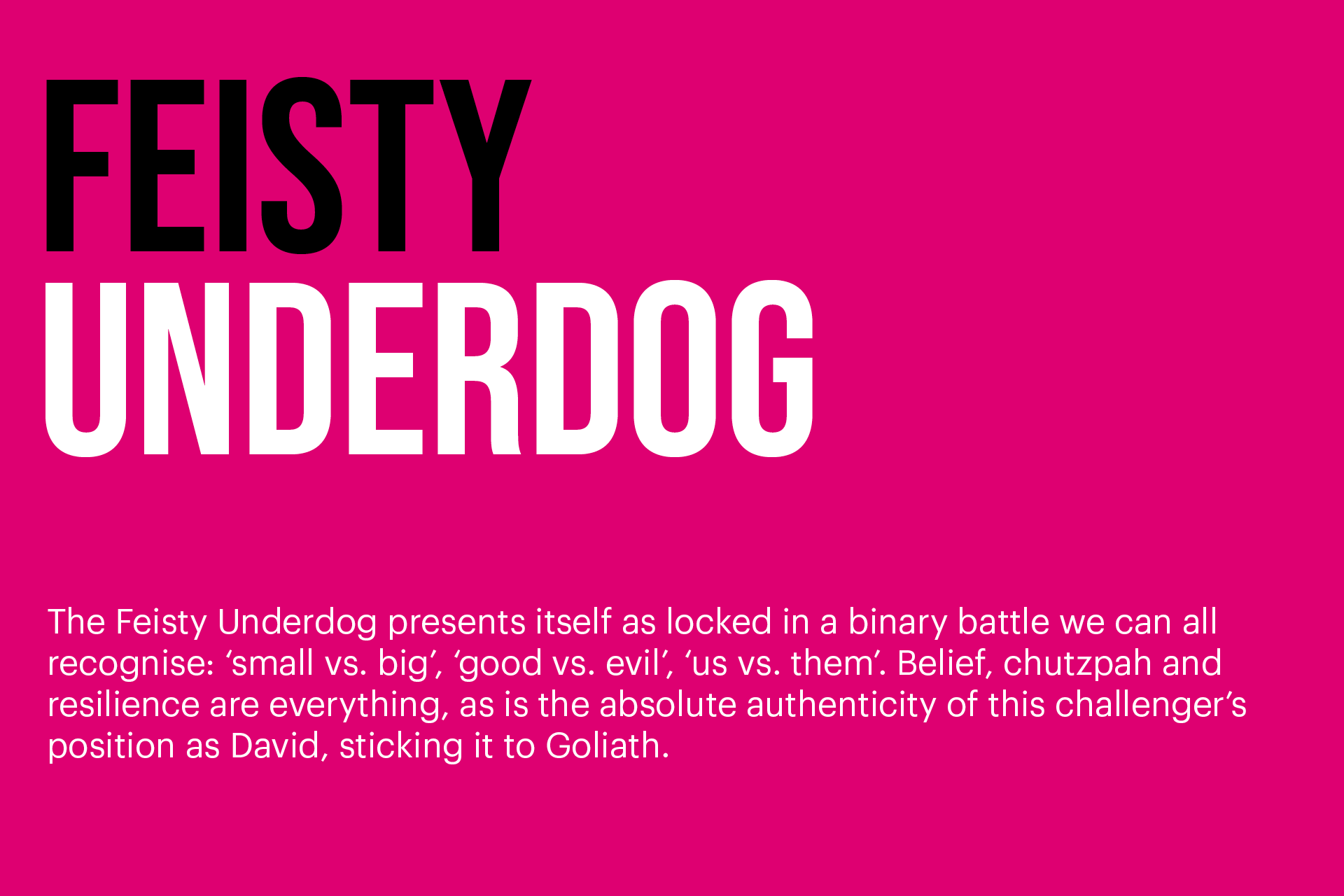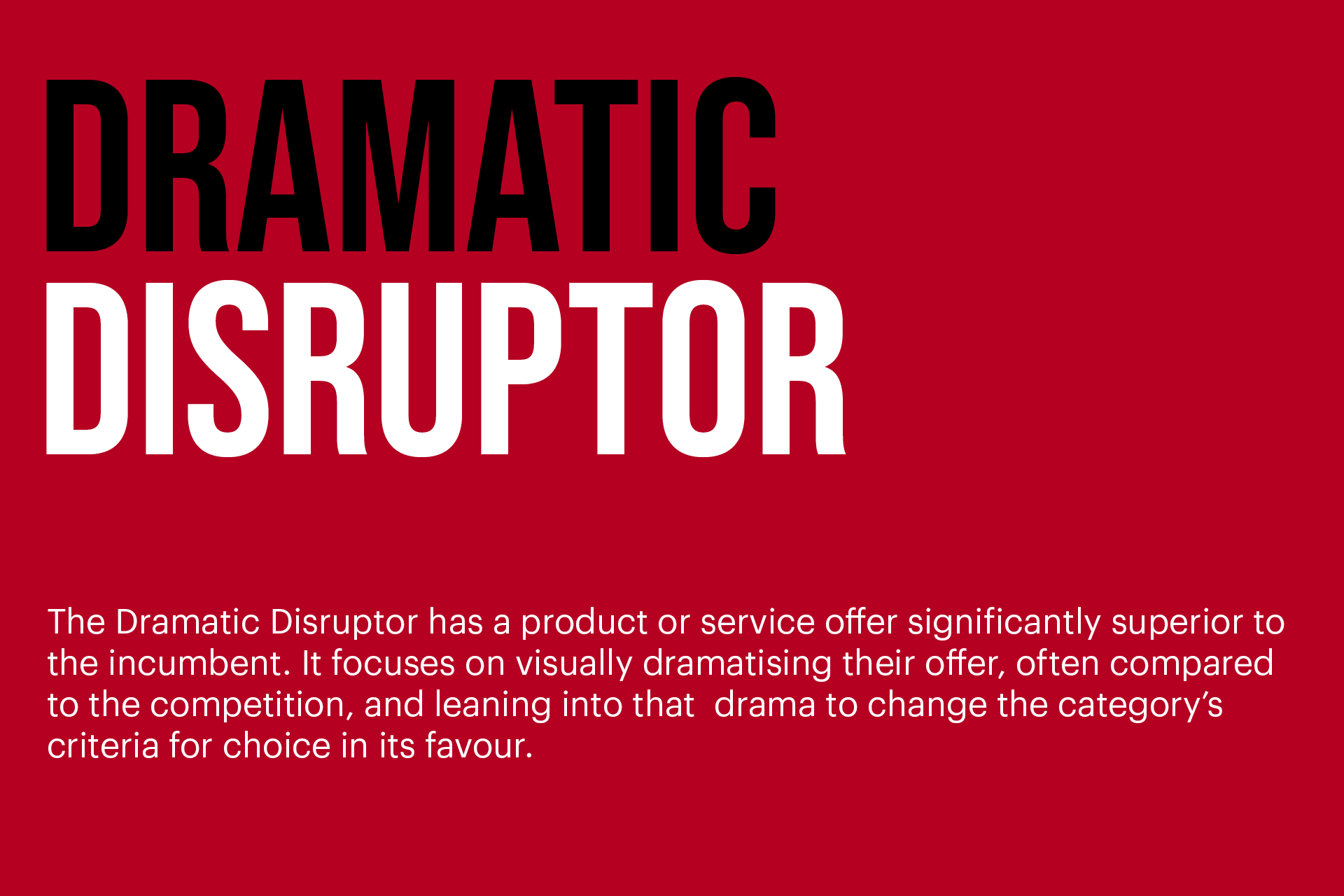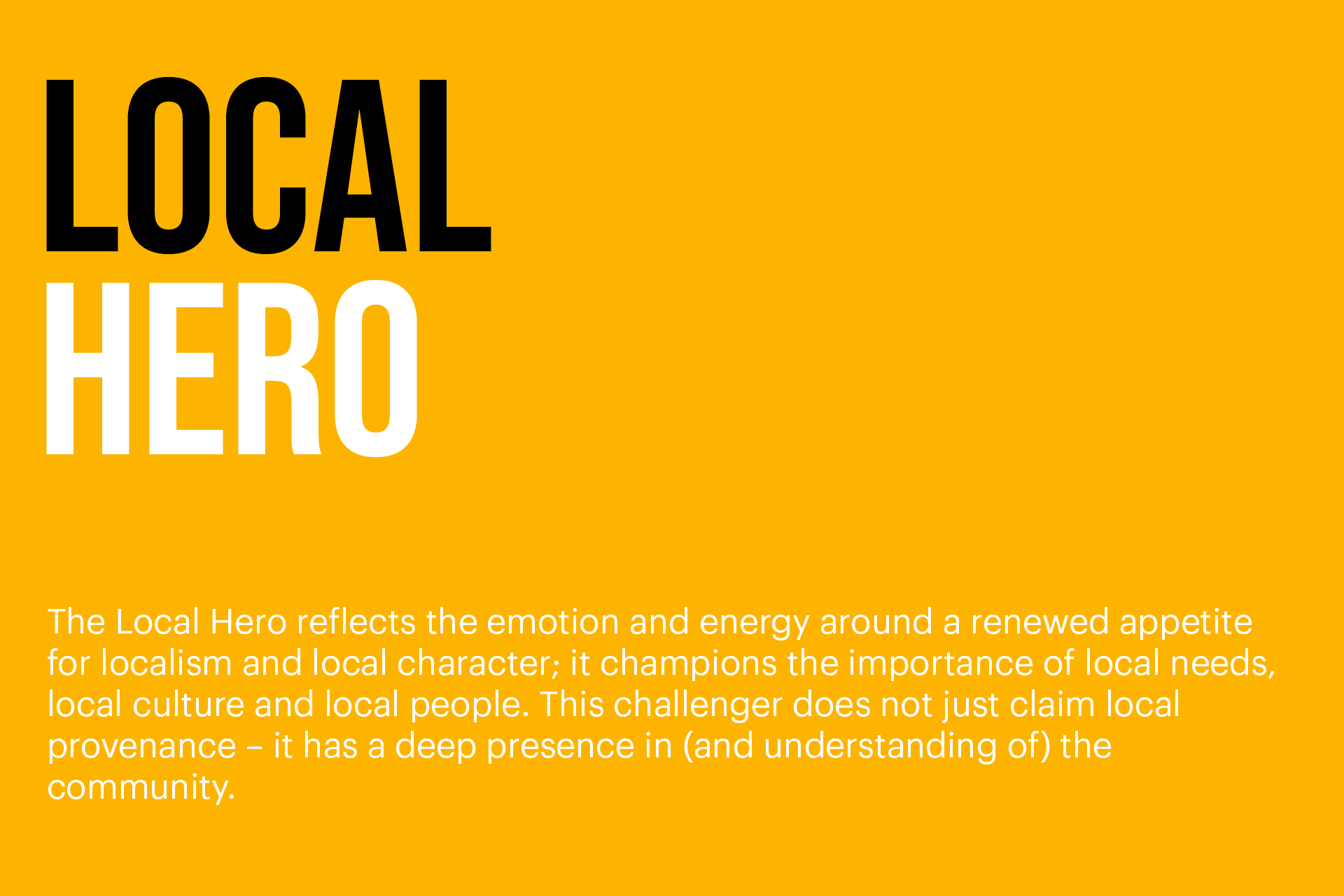How to use Overthrow II to identify and tell your challenger story
Overthrow II, by eatbigfish & PHD.
For marketers, agency planners and entrepreneurs interested in applying the thinking from Overthrow II to their own brands, here is a guide based on the techniques that eatbigfish use to help clients to tell their own challenger story.
Overthrow II, eatbigfish and PHD’s guide to the contemporary landscape of challenger brands, shows that the challenger playbook has changed significantly from the “big vs small” or “irreverent vs boring” story that you might be familiar with. The book highlights 10 different challenger strategies, each of which differs significantly from the next. Brewdog, Casper and Mailchimp are all challengers, but what each is challenging (and why) are very different.
In the past, the most common challenger story was of two brands slugging it out - one a dominant incumbent, the other a feisty challenger. In this story, the challenger would paint the incumbent brand as an “enemy”. Think Virgin vs British Airways, Coke vs Pepsi or Avis vs Hertz. This approach worked because it created the illusion to consumers that there were just two brands in the category to choose from.
Overthrow II shows that today, a challenger is more likely to be about challenging something than someone. Trying to give the market leader a bloody nose is becoming less and less interesting with brands instead looking to the bigger picture. Sports media challenger COPA90, for example, isn’t challenging Sky or ESPN directly, but instead challenges the way in which football (think old England, not New England) has ignored and marginalised young fans. They see the football establishment as a monster that needs to be challenged on their behalf.
A “monster”, as opposed to an enemy, is not based on a personal grudge. A monster is a threat that we all have to face; one that causes problems indiscriminately, laying waste to the world around us. Monsters can be big and brash, or they can be subtle and conniving. Either way, in the eyes of the challenger brand, they must be stopped.
Here’s a guide to identifying the “monster” for your challenger brand.
The 10 challenger strategies
Step 1: Identify your monsters
Against each of the 10 strategies above is a short summary of what each is challenging. Explore what each of these different challenger strategies would mean for your brand in your category. What is the “monster” you need to challenge?
On the face of it, some of these will be obvious and natural to your category, and others will feel less applicable. For instance, in a category where the dominant criteria for choice is all about heritage, you may find it easy to find issues that a Next Generation challenger could take a position on. If however, your category is made up of lots of small competitors, and there’s no clear market leader, the Feisty Underdog strategy may be less fruitful.
You can be very literal and linear here - it’s fine to keep things simple. You may find it is enough to name a competitor against each of these, or perhaps a way in which the consumer is behaving in your category today. They are meant to be issues or behaviours that you, as a challenger, would want to challenge.
Tom Thirlwall, Co-founder and CEO of COPA90.
Step 2: Make each monstrous
For each issue that these narratives would challenge in your category, imagine what the bigger theme is that is at play - what would happen if we were to leave this issue to fester? What would happen if someone didn’t prevent it from getting to its end goal? This is the time for hyperbole and expansive thinking. You’re painting a picture of how bad things could get if you, the new challenger, weren’t to be successful.
So if you think that The Real And Human Challenger would take on how impersonal your category is, you may say that the extrapolation of that will be a point in time where we have forgotten the human entirely, and just see each other as numbers on a spreadsheet. Or perhaps you feel that your Local Hero would bemoan the dominance of global influence on your category, that if left unchecked it risks the extinction of some part of your local or regional culture that you hold dear.
Once you’re done, you should have 10 dramatic end states of where the category or world would be if no-one were to challenge these issues. Some may be realistic and represent real problems in the category today. Some may be more future-facing, and represent problems we need to avoid. All should be things that should be of real concern to us as users of this category, and as people. These are the monsters of the category.
The Local Hero challenger strategy rejects the assumption that ‘international’ is better.
Step 3: Name your monsters
Now create a name for your monster/s.
Planet Fitness, an Enlightened Zagger in fitness centres in the USA calls its monster “Gymtimidation” - the mean-spirited, aggressive and exclusionary practices of the fitness industry (and the “Lunks” that frequent it) that puts people off getting fit. Planet Fitness, of course, is the solution.
Audi, the luxury car brand is a Next Generation. It challenges the gaudy passé trappings of success from yesteryear (as represented by Mercedes and BMW) and labels it “Old Luxury”.
What 1 or 2-word term can summarise the monster you are to challenge?
Step 4: Evaluate and edit
It’s time to understand how each narrative would fit your particular brand. At this point, you can choose to eliminate the narratives you don’t feel strongly about or don’t work so well and focus on the 2-3 that are most interesting or relevant to you.
For each chosen narrative, ask yourself why this role would be credible? What evidence or example do you have for why it would fit your brand?
For a Local Hero, this might spring from your strong local roots and community involvement - a headquarters in a location that gives you a unique perspective; your work championing the community and culture from where you originate (even if you aren’t actively challenging the competition yet).
For a Real and Human challenger, your evidence might be the personal nature of the service you give, or perhaps your brand is all about the people who work there or the customers who enjoy it. Perhaps you have a founder whose name is above the door, and who has become the face of the company.
These don’t have to be examples you’ve made a big deal of yet. In fact, they may be hidden entirely. As long as they are underlying truths to your business, then it will give you a platform to move on from. Some will feel strong and solid - others may feel a bit more tenuous and you’ll soon get a sense of what feels credible and what does not.
Real and human challenger Mailchimp challenges the impersonality of the B2B world.
Step 5: Overcommit
You now have a sense of what your credentials are against each of these challenger narratives - but what would they mean for you going forward? What if we were to go further?
Challengers overcommit to ideas that they feel will give them a disproportionate advantage - what if your brand was to overcommit to one of these narratives? What would it change about what you do? How might it change your product or the way in which your product is sold? How might it change your communication? What might it do for your approach to the long term and the short term?
Again, against the 2-3 narratives that you have chosen, explore what you would have to do to overcommit to one of these narratives. For each, come up with an idea for how your brand might change if it were to follow this path.
As a Missionary, could you change how you compiled your annual reports, to show not only the profits you were making, but the positive impact you were having in the world?
As a People’s Champion, could you put the customer in control of some aspect of your business? Or stand up for their rights? Perhaps a money-back guarantee that none of your competitors would dare to make, or could you make lobbying efforts on their behalf?
The People’s Champion chapter from Overthrow II.
Conclusion
Overthrow II offers 10 different challenger brand strategies or narratives to explore and apply on your own brand. The aim is to help you think about your brand in a new and different way, seeing opportunities to create strong and compelling differences for your brand in your category.
What do you think of the 10 challenger strategies from Overthrow II as a brand building tool? Has it helped you figure out what type of challenger story you could tell? Tell us on Twitter.


